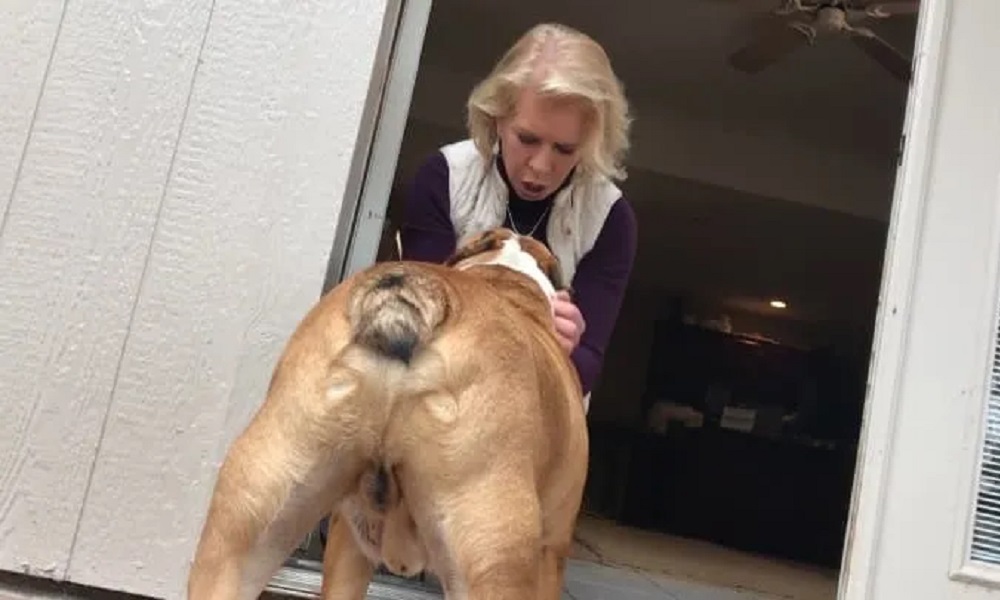Your dog’s balls might be peeling due to irritation, an allergic reaction, or a skin condition. It’s essential to consult a vet for an accurate diagnosis and treatment plan.
Owning a dog comes with various responsibilities, including tending to their health concerns such as peeling skin on their balls. This can alarm any pet owner, as it could signal an underlying issue needing attention.
Common reasons for this peeling include environmental irritants, infections, or even hormonal imbalances. It’s important to observe any accompanying symptoms like itchiness, redness, or unusual behavior, which can help pinpoint the cause.
Timely veterinary consultation will ensure your dog receives the right care and relief. Maintaining your dog’s hygiene and regular check-ups can prevent such problems from escalating, ensuring your furry friend stays comfortable and healthy.

Causes Of Peeling In Dog’s Balls
Seeing your dog’s balls peeling might alarm you. It’s crucial to understand what might cause this issue. Factors range from infections to allergies and environmental conditions. This guide will delve into each cause, shedding light on why your furry friend might be experiencing discomfort.
Infections
Potential culprits for peeling skin on your dog’s balls are infections. Bacterial and fungal invaders can lead to inflamed, peeling skin. Look for signs of redness, swelling, or discharge. Immediate vet attention can prevent more serious problems. Regular hygiene can help keep infections at bay.
Allergies
Allergies in dogs are no small matter. They can stem from food, products, or environmental triggers. A common reaction is skin irritation, which includes peeling. Watch for excessive licking or scratching. Identifying the allergen is crucial for soothing your dog’s skin.
Environmental Factors
The world around your dog can impact his skin health. Extreme temperatures, humidity changes, and rough surfaces all play a role. Dry air can dehydrate skin, leading to peeling. Keep your dog’s environment consistent and comfortable to prevent these issues.
Symptoms Of Peeling In Dog’s Balls
Dog owners may notice changes in their pet’s scrotal area. Peeling balls in dogs can cause worry. It’s vital to understand the symptoms. This ensures prompt action for your furry friend’s comfort.
Redness
The first sign to look out for is redness. Dog’s balls can appear more pink or red than usual. This could indicate irritation or peeling. Check regularly for any color changes in your dog’s scrotal skin.
Itching
Another symptom is itching. Dogs will often lick or scratch their balls if there’s discomfort. Watch out for more licking or scratching in that area. It may be time to seek a vet’s advice.
Scaly Skin
Last, scaly skin can be a sign of peeling. You might see flakes or scabs around the scrotum. This dry, flaky skin can indicate a health issue.
Treatment For Peeling In Dog’s Balls
Finding your dog’s balls peeling can be alarming. This issue, while uncomfortable for your pet, is commonly dealt with through simple treatments. The right approach can soothe your pooch’s skin and promote healing.
Medicated Shampoos
Medicated shampoos offer a primary defense against peeling balls in dogs. These products, designed with special ingredients, target skin issues effectively. Use them as follows:
- Follow the label’s instructions closely.
- Wet your dog’s skin and apply the shampoo gently.
- Let it sit to allow the medication to work.
- Rinse thoroughly after the recommended time.
Topical Creams
Consider topical creams for direct application. These creams contain healing compounds. Apply them like this:
- Clean the affected area with a soft cloth.
- Pat the area dry gently.
- Spread a thin layer of cream as guided.
- Repeat the process if the vet advises.
Veterinary Consultation
A veterinary visit is critical for unusual or persistent symptoms. Your vet can identify the root cause. They may suggest following steps:
- Conduct an examination and necessary tests.
- Diagnose the condition accurately.
- Prescribe treatment specifically for your dog.
- Provide care instructions for home treatment.
Prevention Of Peeling In Dog’s Balls
Seeing a dog’s skin issues, especially peeling balls, can be alarming. It’s crucial to understand how to prevent this uncomfortable condition.
Taking proactive steps defends against peeling and keeps your furry friend healthy. Here are trusted strategies for prevention:
Regular Hygiene
Keep your dog clean to prevent skin issues. Providing regular, gentle baths helps maintain their skin in top condition. Here’s how to ensure proper hygiene:
- Choose the right shampoo: Select a canine-formulated, mild product.
- Bathing routine: Bathe your dog as recommended by a vet, not too often to avoid dry skin.
- Dryness prevention: Thoroughly dry their groins with a soft towel to ward off irritation.
Avoiding Irritants
Irritants can lead to skin peeling. It’s key to know which irritants to steer clear of:
- Harmful chemicals: Keep your pooch away from harsh cleaning agents.
- Rough surfaces: Avoid letting your dog sit or lie on rough textures that can chafe their skin.
- Allergy management: Be aware of your dog’s allergies, and keep allergens away.
Balanced Diet
A balanced diet promotes healthy skin. Nutrients support skin elasticity and repair. Ensure your dog’s diet includes:
| Nutrient | Benefit | Food Sources |
|---|---|---|
| Fatty acids | Moisturize skin | Fish, flaxseeds |
| Vitamins E and A | Repair skin | Green veggies, carrots |
| Zinc | Prevent dryness | Meat, legumes |
Monitor your dog’s health. Work together with a vet to ensure a diet suited to your dog’s needs.
Conclusion
Understanding your dog’s health can sometimes be befuddling, especially when it concerns something as unusual as peeling balls. It’s vital to pay attention to such symptoms, as they can be indicators of underlying health issues.
Remember, regular check-ups with your vet can ensure your furry friend stays in prime condition. Keep an eye open for any changes and don’t hesitate to seek professional advice for your pet’s well-being.